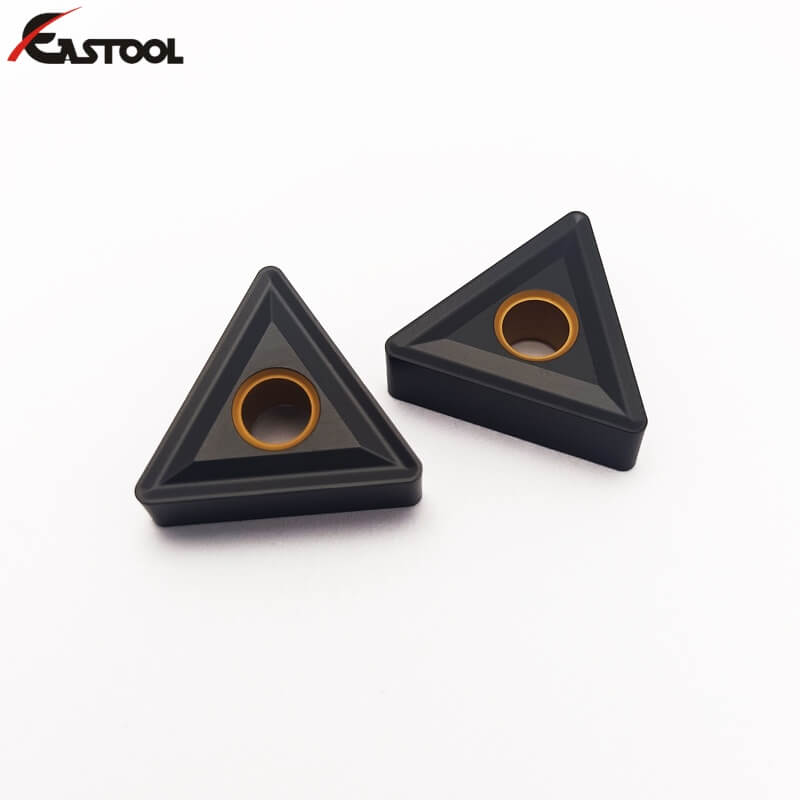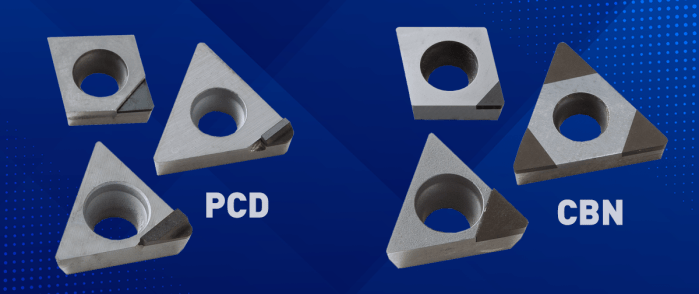April 29, 2024
Cutting inserts are an integral part of modern manufacturing processes. They are designed to increase productivity and reduce costs by increasing the efficiency of the cutting process. They also increase the quality of the products being produced. In this article, we will discuss how cutting inserts contribute to cost savings in manufacturing processes.
One of the main benefits of using cutting inserts is that they reduce the amount of time and energy required to produce a product. By using inserts, the cutting process is much faster and more efficient. This means that more products can be produced in a shorter amount of time. This saves the manufacturer time and money, as they can produce more products in less time.
Cutting tungsten carbide inserts inserts also help reduce material waste. By using inserts, the cutting process is more precise and accurate, which reduces the amount of material that is wasted during the cutting process. This helps reduce the amount of raw materials used, as well as the cost of waste disposal. As a result, manufacturers are able to reduce their overall costs.
In addition, cutting inserts help increase the accuracy of the cutting process. This increases the quality of the products that are produced, as well as the overall lifespan of the product. By having more accurate cutting, manufacturers are able to produce higher quality products that will last longer, thus increasing customer satisfaction and reducing warranty claims.
Overall, cutting inserts are a great way to reduce costs in manufacturing processes. They help reduce the amount of time and energy required to produce a product, reduce material waste, and increase the accuracy of the cutting process. These benefits all contribute APMT Insert to cost savings for manufacturers, which helps them remain competitive in the marketplace.
The Cemented Carbide Blog: Carbide Inserts
Posted by: arthuryves at
03:07 AM
| No Comments
| Add Comment
Post contains 311 words, total size 2 kb.
April 26, 2024
Posted by: arthuryves at
07:06 AM
| No Comments
| Add Comment
Post contains 9 words, total size 1 kb.
April 20, 2024
As an indispensable functional material in machinery, shipbuilding, aerospace, construction, nuclear power, metallurgy and other industries, tungsten electrode materials are mainly used in inert gas shielded welding, plasma cutting, spraying and smelting technology. At the Carbide Drilling Inserts same time, another important application of tungsten electrode material is to act as a hot cathode electron emission source in welding process.

Recently, some researchers have developed a preparation method of rare earth tungsten electrode material. This method adopts ball milling, hot pressing, electron beam vacuum high temperature melting and heat treatment, and finally obtains the rare earth tungsten electrode material with high density and good plasticity.
Step 1 the Tungsten Carbide Inserts with average particle size of 1 micron and purity of Carbide Inserts 99.2% was mixed with zirconia powder with average particle size of 4 micron and purity of 99.3%. After milling for 1 hour, the zirconia powder takes up 1% of the total mass of the mixed powder.
Step 2 hot-pressing: the tungsten-based zirconia bulk mixture is obtained by hot-pressing the mixed powder at 1800 ☆ and 30 MPa for 1 h.
Step 3 electron beam melting: Put the tungsten-zirconia bulk mixture in the crucible of the electron beam melting furnace, vacuum it below 0.0042Pa, open the electron gun at high pressure of 30 kV, beam current of 600 mA for smelting, smelting for 20 minutes, turn the tungsten-zirconia alloy ingot upside down after solidification and cooling, smelting at high pressure of 30 kV and beam SNMG Insert current of 400 mA for 20 minutes. The tungsten zirconia alloy ingot was obtained after solidification and cooling.
Step 4 vacuum heat treatment: vacuum heat treatment has no oxidation, no decarbonization, no element dilution characteristics, can achieve bright heat treatment, can make the parts degrease, degassing, avoid surface pollution and hydrogen embrittlement; at the same time can achieve control heating and cooling, reduce heat treatment deformation, improve material performance;
Rare earth elements can not only increase the recrystallization temperature, but also activate electron emission. The W-RE alloy formed by combining with tungsten has the characteristics of low work function, high melting point and low vapor pressure. It is a kind of electrode material with high performance and safety.
Other Shoulder Milling Inserts Carbide Inserts Blog: https://carbideinsert.bloggersdelight.dk
The Cemented Carbide Blog: VBMT Insert
Posted by: arthuryves at
04:06 AM
| No Comments
| Add Comment
Post contains 387 words, total size 4 kb.
April 16, 2024
Posted by: arthuryves at
05:53 AM
| No Comments
| Add Comment
Post contains 8 words, total size 1 kb.
April 10, 2024
The manufacturing of the hardest cutters on the planet involves some intense processes and chemistry. Polycrystalline diamond tools (PCD) and Cubic Boron Nitride (CBN) are one and two, respectively, on the list of hardest insert materials, even still, their extreme chemistries are quite different. Without getting into the nitty gritty chemistry, extreme heat, sintering and pressure is used to form different grades of the inserts based on their material/binding ratio. ?
While we specialize in holders, we do offer some specialized cutters with these materials and often get questions about PCD and CBN. Matt Tegelman, our senior product specialist often fields these questions. Here, we share his CCMT Insert answers.
What is the best min/max depth of cuts for PCD and CBN inserts??
PCD and CBN inserts are reserved for light semi-finishing and finishing operations only. I’d generally recommend a maximum of .040" stock on diameter and minimums down to .004", depending on the insert nose radius.?
Should I use coolant with PCD and/or CBN inserts
Use either a lot of Indexable Threading Insert coolant or none at all. Thermal fracture of these materials can occur with large temperature fluctuations. As long as coolant is used effectively, it should help tool life and chip evacuation. If coolant can’t be directed at the cutting action with consistent flow—it will be detrimental to the operation.?
Does edge preparation matter with PCD and CBN inserts
The extreme processes used to make these very hard cutter materials make edge preparation important with CBN and PCD, both for reinforcement and chip control. What’s more, you’ll find microscopic edge defects on nearly every tool prior to edge preparation; when high performance is required, as is often the case with these cutters, preparation eliminates defects that can cause erratic performance. ?
PCD and CBN inserts are now offered with almost as many edge preparation styles as carbide inserts. They are categorized by ‘land’ types, and each type gives advantages in specific materials and cutting conditions.?
Are there minimum and maximum speeds for PCD and CBN inserts
Contrary to most perceptions, PCD has a wide range of allowable SFM for aluminum, from as low as 200 to 6,000 and will outlast carbide inserts at least 10x, allowing tools to remain in tolerance without adjustments for very long periods of cutting time. With CBN inserts, feeds as low as 200 SFM are often used in hardened steel applications. ?
With our boring tools, it is often necessary to consider the tool assembly and workpiece setup rigidity when making the decision to go to high-speed machining with these types of inserts. Often, a boring head with built-in counterweights for balance will be required to be able to run the speeds that these inserts are capable of.?
What’s the biggest difference between PCD and CBN inserts
PCD inserts are the first choice in aluminum and magnesium applications, as well as carbon fiber parts, as its extreme hardness provides unmatched life in these non-ferrous materials. Since it is a synthetic diamond (almost pure carbon), it cannot be used to machine ferrous materials like steels and cast irons, because at temperatures over 700° Fahrenheit carbon atoms react with the part material to form iron carbide and cause the diamond structures to collapse. PCD is especially required when aluminum has more than five percent content, to resist the abrasiveness that leads to wear. ?
CBN uses boron as the primary element. While boron has a similar crystal structure to carbon, it lacks the affinity to iron. It is the second hardest known material and can tolerate cutting temperatures over 1,800° Fahrenheit. CBN is suitable for steel or iron machining and is the first choice when working with hardened steels, usually more than at least RC50 and should be used for finishing only. Any interrupted cutting requires the highest stability tool, otherwise it won’t work. ?
CBN comes in different grades, where binders such as ceramics and metals are added to change the characteristics. Grain sizes of the crystal structure can also be tweaked for certain characteristics. High CBN content with ultrafine grain sizes is the hardest combination, suitable for continuous machining of hardened cast iron and powdered metals. Our grade CBN-CH, meanwhile, is for gray cast iron only and should not be used for boring ductile or chilled iron, it will not provide the tool life increases over traditional carbide grades.?
CBN inserts can also be coated; medium-grain size CBN material with a TiCN coating is recommended for machining hardened steels. ?
How can BIG DAISHOWA help when it comes to PCD and CBN inserts
We are not a carbide, nor a PCD/CBN producer/manufacturer, but we have a lot of knowledge here in-house and are always willing to help metalworkers. We do offer CBN and PCD tipped inserts with custom chip-breaker forms that optimize cutting performance when used in our boring tools. ?
The Cemented Carbide Blog: Carbide Inserts
Posted by: arthuryves at
07:52 AM
| No Comments
| Add Comment
Post contains 822 words, total size 6 kb.
April 08, 2024
Sandvik Coromant offers its CoroMill 390 end mill with size 07 inserts, making it BTA deep hole drilling inserts ideal for shoulder milling, edging, linear and helical ramping, plunge milling, slot milling, and face milling. From roughing to finishing, it offers reliability, CNMG Insert precision and productivity, the company says. Suitable for all machine types, this end mill can be used with different materials and applications in mixed production.
Grades for the CoroMill 390 are available for all materials, Sandvik says. The insert grade GC1130, produced with Zertivo technology, is designed to give the cutter extra security when milling steel. The smaller inserts deliver higher cutter-tooth density for productivity.
The torque key is designed for size 07 inserts and is said to provide consistent clamping. It has built-in spring functionality that enables the user to mount inserts with the correct clamping force for reliable and consistent tool life. Coolant-through technology provides additional heat and chip control.
The Cemented Carbide Blog: CNC Carbide Inserts
Posted by: arthuryves at
06:39 AM
| No Comments
| Add Comment
Post contains 171 words, total size 2 kb.
April 02, 2024
Iscar offers a variety of inserts suitable for the machining of bearings, TCGT Insert including its Penta series of multi-corner inserts with deep hole drilling inserts five cutting edges used mostly for parting-off operations, seal groove machining, raceway grooving and other applications. These inserts can also be used for trepanning, an axial operation for the separation of one thick forged ring into two separate outer and inner rings. For such operations, the company also offers its BGR and BGMR inserts for wider rings that demand deep separation operations. In addition, Iscar offers multi-parting systems designed for parting a few rings at a time. Such sets are provided with the Tang-Grip and Do-Grip insert as well as the Penta inserts.
These insert products are available in very narrow sizes that enable manufacturers to significantly reduce the width of inserts down to 0.7 and 1.0 mm for raw material savings, the company says.
The Cemented Carbide Blog: Cemented Carbide Inserts
Posted by: arthuryves at
04:02 AM
| No Comments
| Add Comment
Post contains 165 words, total size 1 kb.
32 queries taking 0.0182 seconds, 90 records returned.
Powered by Minx 1.1.6c-pink.










